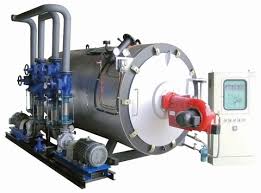
Nov . 08, 2024 04:27 Back to list
Understanding the Fundamentals of Steam Boiler Design Techniques and Best Practices
Steam Boiler Design Principles and Considerations
Steam boilers are crucial components in various industries, including power generation, manufacturing, and heating systems. They convert water into steam through the application of heat, which can then be used to generate energy, drive machinery, or provide heating to spaces. The design of steam boilers involves a complex integration of thermodynamic principles, material science, and engineering best practices. This article provides an overview of the fundamental aspects of steam boiler design.
Types of Steam Boilers
There are primarily two types of steam boilers fire-tube and water-tube boilers.
1. Fire-Tube Boilers These boilers are characterized by a series of tubes where hot gases from combustion pass through water. The heat from these gases is transferred through the walls of the tubes, heating the water and producing steam. Fire-tube boilers are generally simpler in design and easier to maintain, making them suitable for smaller applications.
2. Water-Tube Boilers In contrast, water-tube boilers have the water contained in tubes, which are surrounded by hot combustion gases. This design is efficient and allows for higher pressures and temperatures, making water-tube boilers ideal for larger industrial applications.
Each type of boiler has its advantages and disadvantages, and the choice between them typically depends on the specific requirements of the application, including pressure, temperature, steam capacity, and fuel type.
Key Design Considerations
When designing a steam boiler, several critical factors need to be taken into account
steam boiler design

1. Thermal Efficiency The efficiency of a boiler is vital for maximizing energy output while minimizing fuel consumption and emissions. Boiler designers often employ advanced technologies like economizers, which recover waste heat from flue gases to preheat feedwater, thus improving overall efficiency.
2. Material Selection The materials used in constructing a steam boiler must withstand high temperatures and pressures, as well as corrosive environments. Common materials include carbon steel, stainless steel, and high-alloy steels. The choice of materials also impacts the boiler's lifespan and operational safety.
3. Safety Features Safety is paramount in steam boiler design, given the potential hazards associated with high-pressure steam. Boilers are equipped with various safety devices, including pressure relief valves, water level controls, and temperature sensors. Additionally, regular maintenance and inspections are essential to ensure safe operation.
4. Sizing and Capacity Proper sizing of a steam boiler is crucial to meet the specific demands of its application. Oversized boilers can lead to inefficiencies and increased operational costs, while undersized units might not provide adequate steam supply. Factors such as peak demand, load variations, and operational hours should be considered during the sizing process.
5. Environmental Considerations Modern boiler designs must also account for environmental regulations and sustainability. Emissions from combustion processes can impact air quality, so integrating technologies such as low-NOx burners and flue gas treatment systems can help minimize harmful emissions.
The Future of Steam Boiler Design
As industries evolve and the push for sustainable practices increases, the design of steam boilers is also undergoing transformations. Innovations in materials, automation, and renewable energy integration are shaping the future of boiler technology. For instance, some designs are incorporating biomass and other renewable fuels to reduce reliance on fossil fuels. Additionally, advancements in digital monitoring and control systems allow for improved operational efficiency and predictive maintenance, thus extending the lifespan of boilers.
Conclusion
In conclusion, steam boiler design is a multifaceted discipline that encompasses various engineering principles and safety considerations. As industries continue to seek efficient and environmentally friendly solutions, the ongoing development in steam boiler technology promises to enhance energy use while prioritizing safety and sustainability. Engineers and designers must remain adaptable and innovative to meet the changing demands of the market, ensuring that steam boilers continue to play a vital role in industrial processes and energy production for years to come.
-
Best Steam Boiler Design PDF Free Design Calculation & Diagram Downloads
NewsJun.10,2025
-
Hot Boiler Water Heater Efficient Heating Solutions for Home & Commercial Use
NewsJun.10,2025
-
Steam Boiler Safety Devices High-Quality Protection Valves
NewsJun.10,2025
-
Ultimate Steam Boiler Checklist for Safety & Efficiency
NewsJun.10,2025
-
Optimal Hot Water Boiler Temperature Setting Guide
NewsJun.10,2025
-
Effective Hot Water Boiler Chemical Treatment Protect & Maintain
NewsJun.09,2025
Related PRODUCTS






















